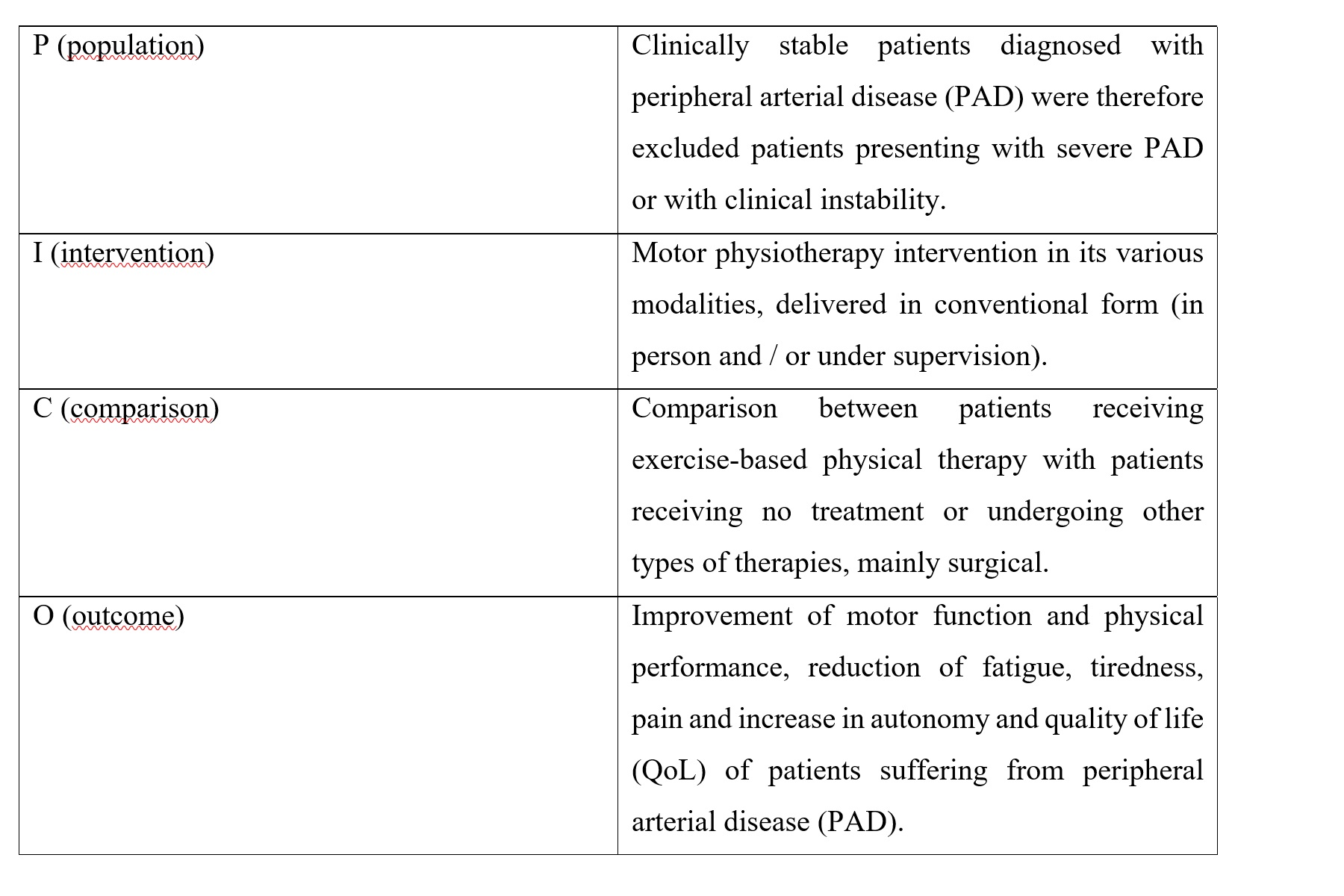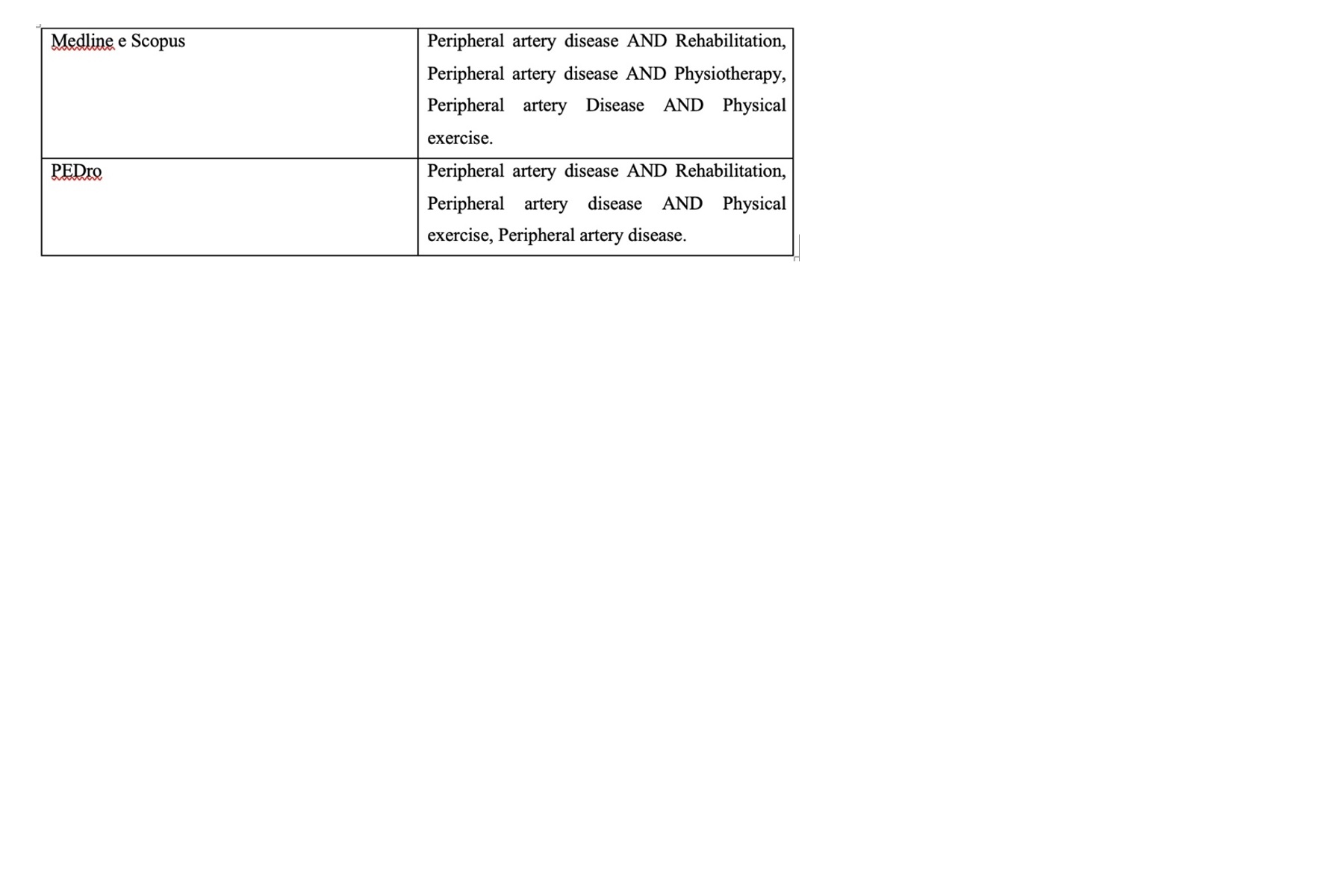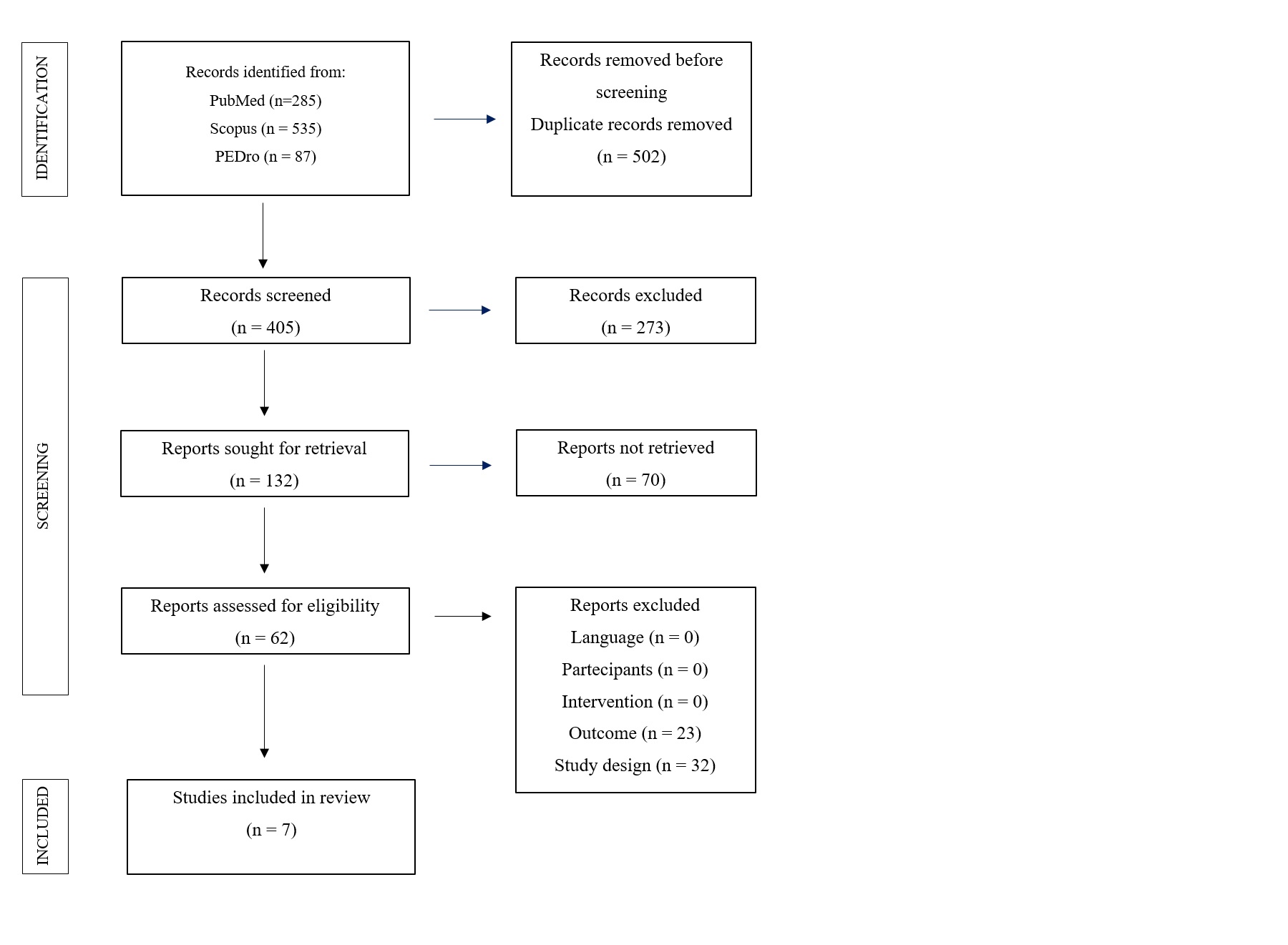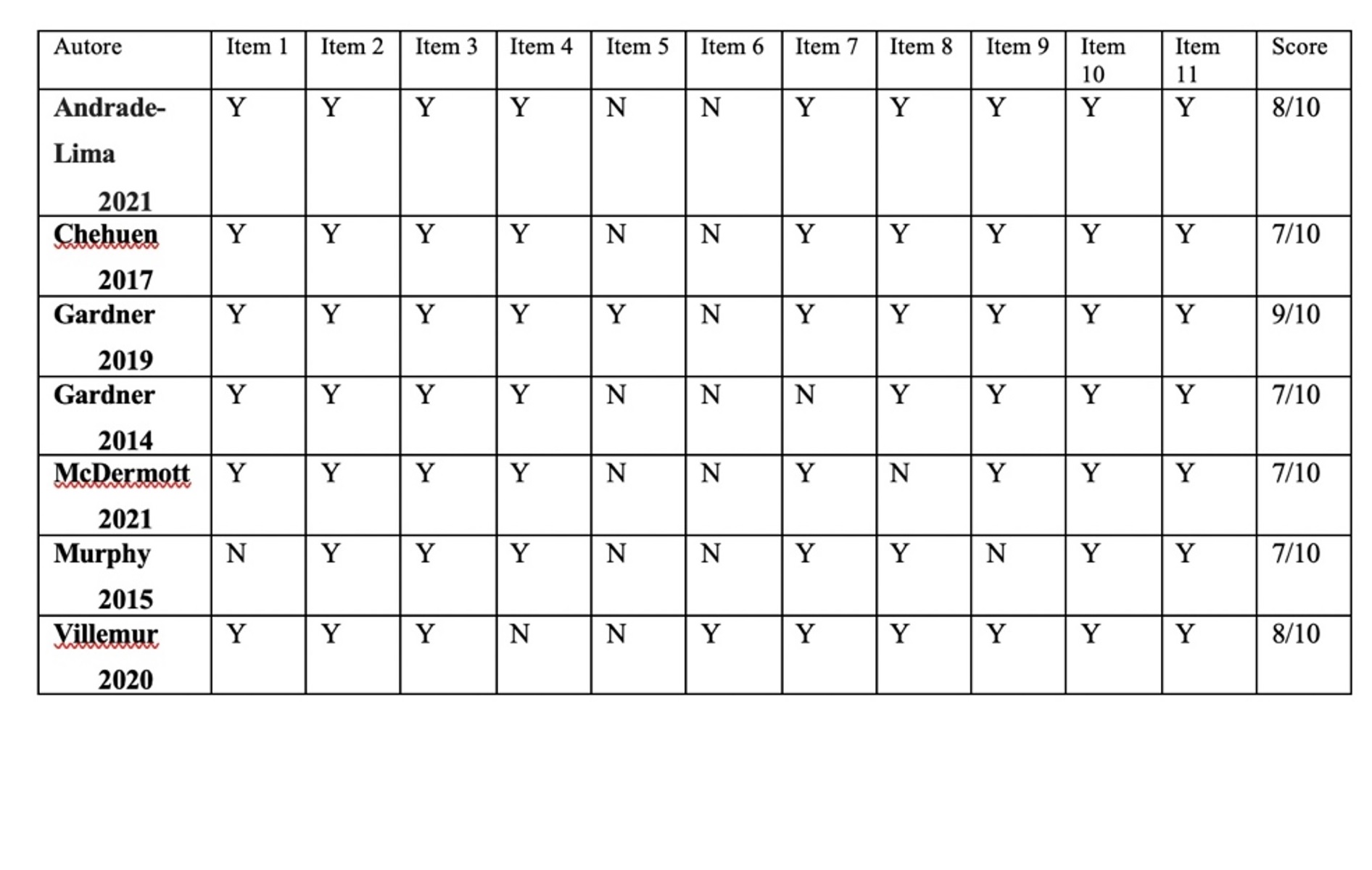EFFICACIA DELL’ESERCIZIO FISICO NEL TRATTAMENTO CONSERVATIVO DELLA ARTERIOPATIA OBLITERANTE PERIFERICA: REVISIONE SISTEMATICA
EFFECTIVENESS OF EXERCISE IN THE CONSERVATIVE TREATMENT OF PERIPHERAL OBLITERANT ARTERIOPATHY: A SYSTEMATIC REVIEW
Introduction
The Peripheral Artery Disease (PAD) is a vascular pathology characterized by a stenosis or a narrowing of the arteries of the lower limb, caused by the atherosclerotic disease with which shares the major risk factor. The primary symptom is claudicatio intermittens (CI), described as cramping pain primarily in the calves, relieved by rest within 10 minutes (1;2). The PAD treatment involves the control of the symptomatology and the interruption of the progression of the atherosclerosis, through prevention and rehabilitation protocols (3). Several studies have demonstrated the fundamental importance of conservative treatment based on supervised exercise training (SET), due to the increased tissue perfusion and angiogenesis it induces, improving circulation to the lower extremities (4). The objective of the study is to evaluate which form of exercise is more specific and effective for the conservative treatment of PAD
Methods
The literature search, conducted following the international PRISMA guidelines using the PICO strategy (Figure 1), was carried out through the Medline (via PubMed), Scopus and PEDro databases between December 2022 and January 2023. Common search strings have been formulated for Medline and Scopus. The string Peripheral artery disease was also used on PEDro (Figure 2). Furthermore, the search for the articles was limited using the following filters: year of publication (between 2012 and January 15, 2023), language (English), type of study (RCT). Relevant articles were selected by title, duplicates were eliminated using EndNote software. The articles were then chosen based on the reading of the abstract and ultimately the full text (Figure 3). After inclusion, the methodological quality of the selected RCTs was assessed using the PEDro scale (Figure 4).
Results
After the search conducted on the multimedia databases, the studies considered useful and relevant and therefore included in this systematic review were 7, composed only of randomized controlled trials (RCTs). Most of the studies included in the revision have predicted, for the intervention group (WTG), intermittent walking exercises on the treadmill, while the training intensity varied in the different protocols. Some of the studies included, not all have a control group. The studies analysed present, as the most shared outcomes, those relating to 2 macro-areas: cardiovascular function and functional capacity (exercise), which were evaluated in almost all of the studies through the use of heterogeneous scales and instruments. When assessing functional capacity, improvements were noted in nearly all groups undergoing a complete rehabilitation program. In the evaluation of cardiovascular function, however, heterogeneous results were obtained
Discussion and Conclusion
According to the AHA/ACC (3) guidelines 2016 on the management of patients with PAD, walking is the first-line therapy. What unites the rehabilitation protocols analyzed is the use of aerobic exercise, based on walking/treadmills and muscle relaxation techniques, to obtain progressive functional improvements and a reduction in the level of disability of the patients. Despite heterogeneous rehabilitation protocols for PAD in the literature, in terms of intensity, timing and duration of exercise, cardiovascular rehabilitation based on the combination of aerobic training at regular or continuous intervals and at high or low intensity, has proved to be able to improve patients’ health, well-being and quality of life (QoL) and enhance the exercise capacity and strength of the walking muscles.
REFERENCES
- Wennberg PW. Approach to the patient with peripheral arterial disease. Circulation 2013; https://doi.org/10.1161/CIRCULATIONAHA.
- Gerhard-Herman MD, et al. 2016 AHA/ACC Guideline on the Management of Patients With Lower Extremity Peripheral Artery Disease: A Report of the American College of Cardiology/American Heart Association Task Force on Clinical Practice Guidelines.
- Aboyans V, et. al. 2017 ESC Guidelines on the Diagnosis and Treatment of Peripheral Arterial Diseases. European Heart Journal. 2018 Mar
- Aboyans V., et al. Measurement and interpretation of the ankle-brachial index: A scientific statement from the American Heart Association. Circulation. 2012




